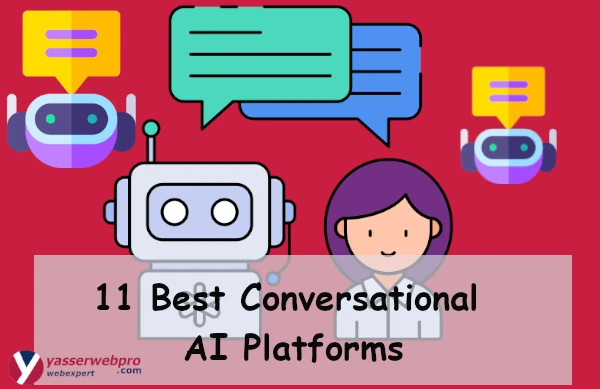AI Tools That Actually Increase Productivity (And How to Use Them Correctly)
Have you felt that strange mix of excitement and panic when you think about Artificial Intelligence? One minute, you hear about a revolutionary AI productivity tools that’s going to automate your job. The next minute, you are swamped by 50 different apps all promising the world. Where do you even start?
If you are a beginner, a student, or a small business owner, the goal isn’t to become an AI programmer. The goal is simple: personal efficiency. You want tools that genuinely save you hours every week, not complicated software that just adds a new distraction to your day.
The secret to boosting productivity with AI isn’t collecting hundreds of subscriptions. It’s adopting a few proven tools and learning to use them correctly.
This guide cuts through the noise. We are going to look at five essential AI productivity tools that deliver real results, and I’ll give you the beginner AI workflow tips you need to master them today.
The Foundational Mindset, AI as Your Intern
Before you touch any software, you need the right mindset. Think of AI not as a replacement, but as an extremely fast, highly competent, slightly clueless intern.
This intern is fantastic at:
- Drafting. Producing a first draft of almost anything in seconds.
- Summarizing. Condensing long documents into key bullet points.
- Research. Compiling basic facts and data points from the web.
- Repetitive Tasks. Scheduling, transcription, and basic coding.
This intern is terrible at:
- Judgment. It lacks real-world context and emotional nuance.
- Verification. It will confidently lie (hallucinate) if it does not know the answer.
Your job, as the human expert, is to provide the direction, check the facts, and apply the final polish. This is the core of correct AI use.
EEAT Insight: The Productivity Jump
Using this approach delivers serious results. A 2024 working paper from the Federal Reserve found that on average, workers are approximately 33 percent more productive in each hour that they use generative AI compared to hours where they do not. The gain comes from offloading the routine, time-consuming tasks and concentrating human effort on critical thinking.
AI Tool 1: The All-Purpose Writing and Brainstorming Assistant (ChatGPT / Claude)
No matter what you do, you write constantly. Emails, reports, meeting agendas, social media posts. A large language model (LLM) is the single most accessible and versatile AI productivity tools you can adopt.
What It Does
These tools (think ChatGPT or Claude) serve as a sounding board, a draft machine, and a rapid information compiler. They excel at turning a vague idea into a structured document.
How to Use It Correctly (The Beginner AI Workflow)
The mistake beginners make is asking vague questions, like “Write a blog post about productivity.” The output will be generic and unusable.
The secret is Prompt Engineering, which is just a fancy term for giving better instructions.
- Assign a Role. Start by telling the AI who it is. Example: “Act as a marketing copywriter specializing in short-form text.”
- State the Goal. Define the output format. Example: “Write five email subject lines for an audience of small business owners.”
- Provide Context. Give it the necessary details. Example: “The subject lines must advertise a new article on financial forecasting. Keep them under 50 characters.”
You don’t need to write the final draft, you just need a great starting point that speeds up your personal efficiency. A skill known as Mastering Prompting.

AI Tool 2: The Meeting Manager and Note-Taker (Otter.ai / Fireflies.ai)
If your job involves meetings, you know how much time is wasted trying to take notes, follow the discussion, and participate all at once. For beginners, this can be overwhelming.
What It Does
These tools use AI to join your virtual meetings (Zoom, Meet, Teams), record the conversation, and generate a complete, searchable transcript. But they go further, summarizing the discussion, pulling out key moments, and identifying action items and who owns them.
How to Use It Correctly
Do not rely on the AI to understand everything. It is a listener, not a strategist.
- Delegate the Task. Treat the tool as the designated notetaker. This frees up your human brain to focus entirely on the discussion and the relationships in the room.
- Check for Actions. After the meeting, immediately scan the AI’s summary for the “Action Items” section. Human-check these items for accuracy and completeness. Did you actually agree to launch the campaign tomorrow.
- Use It for Research. If a topic from three months ago comes up, you can search your meeting archive instantly, saving the minutes you would have spent digging through old documents. This is a massive win for personal efficiency.
AI Tool 3: The Automated Calendar and Time Blocker (Reclaim.ai / Motion)
Are you constantly battling with your calendar, trying to find focus time or scheduling a meeting that works for four different people. This is a perfect task for automation.
What It Does
These AI productivity tools treat your to-do list like a set of appointments. You tell the system the task (e.g., “Write first draft,” 2 hours, must be done by Friday), and it automatically finds the best time slot in your calendar to schedule it, protecting that time from other requests.
How to Use It Correctly (Boosting Productivity with AI)
- Set Your Priorities. Be honest with the tool about your most important work hours. Tell it your deep work hours are 9 a.m. to 12 p.m. and it will aggressively guard that time.
- Sync Everything. Connect all your work and personal calendars. The AI can only manage the time it can see.
- Use Habits. Use the tool’s “Habits” or “Routines” feature to block recurring time for essential but non-urgent tasks like checking email, reviewing finances, or taking a lunch break. This consistent structure is vital for beginners building new routines.

AI Tool 4: The Research and Simplification Engine (Perplexity AI / NotebookLM)
When you are starting a new project, the initial research phase can feel like drowning in information. These AI tools help you quickly surface the right information.
What It Does
Unlike a standard Google search, these tools crawl the web (or your own documents) and provide a concise, summarized answer with clear citations to the source material. It is a huge leap in personal efficiency because it does the reading and synthesizing for you.
How to Use It Correctly
- Always Verify Sources. Never take the AI’s word as gospel. If you are going to put information into a business report, you must click the cited source links and verify the original data. This protects your professional credibility.
- Use It for Comparison. Ask the AI to compare and contrast two different concepts or tools. Example: “What are the pros and cons of using Trello versus Asana for project management based on recent user reviews.”
- Upload Your Own Documents. Tools like NotebookLM allow you to upload your own notes, articles, or books, turning the AI into a private research assistant that only works with your trusted information.
EEAT Insight: The Value of Focused Work
A study published by McKinsey & Company in 2025 noted that workers in roles exposed to AI adoption saw their productivity growth rise by a factor of four. The biggest gains were seen in white-collar roles where automation relieved tasks like data gathering and initial drafting, allowing human workers to concentrate on higher-value activities that require unique knowledge or creative input.
AI Tool 5: The Grammar and Style Polisher (Grammarly)
For many beginners, writing clear, professional communication is a major time sink and source of anxiety.
What It Does
This tool goes far beyond simple spellcheck. It analyzes tone, clarity, sentence structure, and vocabulary diversity. It can transform a hurried, messy email into a polished, professional piece of communication that reinforces your credibility.
How to Use It Correctly
- Be Explicit. Use the tool’s goal-setting feature. Are you writing a formal report, a casual email, or a persuasive marketing headline. Setting the goal tunes the feedback for the right context.
- Accept Only What Improves Clarity. Don’t blindly accept every single suggestion. If the AI suggests replacing a word that captures your specific voice or insight, stick with your original. Correct AI use means maintaining your unique human touch.
- Final Polish Only. Write your draft first, focusing on ideas. Only use the AI polisher as the last step. This prevents the AI from interfering with your creative flow.
Final Thoughts, The Future of Personal Efficiency
AI productivity tools are not here to make us obsolete, they are here to make us faster, smarter, and more focused. The best way to achieve boosting productivity with AI as a beginner is to stop chasing every shiny new app and master a small, curated set of tools that handle your biggest time sinks.
Remember the intern analogy. Give the AI clear instructions, check its work, and use the time you save to do the meaningful, human work that machines simply cannot replicate. Start small, be smart, and watch your personal efficiency climb. Now, go save yourself a few hours this week.




